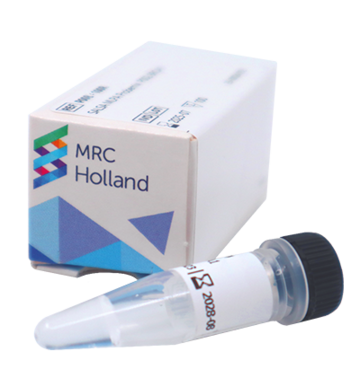P027 Uveal melanoma

SALSA MLPA Probemix P027 Uveal melanoma detects copy number variations in chromosomes 1p, 3, 6 and 8, which are associated with uveal melanoma.

Contents: 50 MLPA probes, including 7 probes for chromosome 1p, 19 probes for chromosome 3, 6 probes for chromosome 6, and 6 probes for chromosome 8.

Tissue: human genomic DNA, including DNA from FFPE tissue.

Application: research on uveal melanoma (UM).

For research use only (RUO). Not for use in diagnostics.
